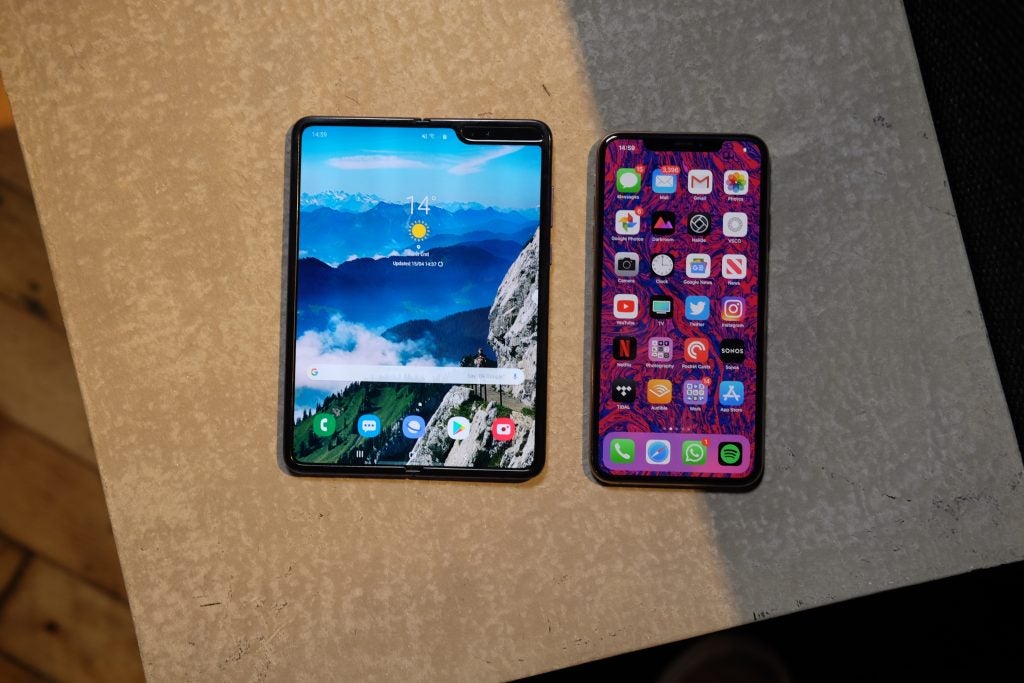Oppo Reno 10x Zoom: Hands on with the P30 Pro rival
The Oppo Reno 10x Zoom boasts flagship internals, an attractive design and a killer camera setup, but does it pose enough of a threat to more established global players like Samsung, Apple and Huawei?
The Oppo Reno 10x Zoom has been a long time coming, with the company first teasing a smartphone zoom camera concept back during Mobile World Congress 2017. The company showcased a follow-up technology demo one year later which appeared to be part of a nearly complete (but at the time still-unnamed) Reno test device.
- Read our full, in-depth Huawei P30 Pro review
The finished article looks to bring some interesting design and hardware elements to the table beyond its titular camera feature; not to mention a new build of the company’s own software and improved Oppo staples like updated VOOC fast-charging technology.
Oppo Reno 10x Zoom – Camera
As the Oppo Reno 10x Zoom name suggests suggests, the headline feature here is the phone’s zoom-savvy camera, which is actually part of a triple module arrangement, comprised of the increasingly-popular 48-megapixel sensor that the likes of the Honor View 20 and Xiaomi Mi 9 use, a 13-megapixel telephoto sensor and an 8-megapixel ultra-wide angle sensor.

Diving deeper, the 48-megapixel IMX586 features OIS (optical image stabilisation), a half inch sensor size, an f/1.7 aperture, 26mm focal length, 0.8µm pixels and supports pixel-binning to condense four-times the amount of image data into a more refined final 12-megapixel image. All that image data also plays a part in helping resolve fine detail when zooming in on things.
Speaking of zooming, the 13-megapixel telephoto sensor sits along the phone’s body, rather than pointing straight out. A unique D-cut periscopic lens rotates its line of sight through 90-degrees. It’s this that helps grant the phone its long-distance vision without adding any significant thickness or a Samsung Galaxy S4 Zoom/K Zoom-style motorised lens onto the back.
- These are the Best camera phones
Similarly to its most like-minded rival, the Huawei P30 Pro, the sensor is capable of lossless optical zoom and works in tandem with the phone’s main sensor at higher magnification levels to retain as much detail as possible. The sensor sports an f/3.0 aperture and, like the primary camera, OIS too.
Last but not least is the 8-megapixel f/2.2 ultra-wide angle lens, which features a short 16mm focal length – one of the two boundaries Oppo uses to define the phone’s 10x zoom capabilities (as it can shoot between 16mm and 160mm at full 20x ‘hybrid’ zoom), there’s no OIS here, however.

Tech specs out of the way, in actual use the raw image quality that the Reno 10x Zoom captures is encouraging. Having done a cursory side-by-side test with the P30 Pro, the Reno appears to make better use of available light (albeit at the expense of fine detail and sharpness), which holds promise should the company’s algorithmic efforts work as well as intended too.
One of the phone’s most distinct physical features is its ‘pivot rising camera’ – a wedge-shaped segment of the phone’s top edge that rises up by way of a motor to reveal the phone’s 16-megapixel f/2.0 front-facing camera. It’s here that you’ll also find twin LED flashes – a soft front-facing flash and one meant for use when trying to illuminate shots via the main camera on the back.
Oppo Reno 10x Zoom – Performance and Software
If you opened up the Reno 10x Zoom, there’d be no doubting its flagship credentials. Head-turning camera array aside, the Qualcomm Snapdragon 855 chipset and up to 8GB of RAM are a sign of good things to come, based on the experiences the team here at Trusted has already encountered from similarly-specced smartphones.

I wasn’t yet able to benchmark the phone, nor test more intensive tasks like gaming and the like but a cursory swipe around showed no noticeable issues with the way the 10x Zoom handles.
The Android 9.0-based user experience has been overlaid with a reworked version of Oppo’s own ColorOS, dubbed ColorOS 6. Aside from the aforementioned algorithmic camera talents, it packs in a number of technologies under the ‘HyperBoost 2.0’ moniker, designed to reduce app load times, system speed and latency when gaming.
Related: Best Phone 2019
Gamers should also take note of this phone’s robust cooling system too, which makes use of a copper heat pipe, cooling gel and layered graphite to dissipate heat more efficiently than your average phone.
Oppo Reno 5G
There’s also the matter of connectivity, which by default includes support for Bluetooth 5.0, Wi-Fi 802.11 a/b/g/n/ac and up to 4G+ mobile browsing speeds (depending on your region). If that still isn’t enough to cut the mustard, those willing to pay a premium can live on the bleeding edge by picking up a 5G variant of the 10x Zoom complete with Qualcomm’s X50 5G modem onboard, a.k.a the Oppo Reno 5G.

Beyond the improved data speeds, Qualcomm and Oppo are hoping that the Reno can serve as a flagbearer for 5G in 2019, mainly through demonstrating the benefits of the technology on compatible networks by supporting experiences such as virtual or augmented reality streaming and multiplayer gaming, anywhere.
Related: What is 5G?
The Reno line was originally teased in partnership with Swisscom, primarily as a result of the phone’s 5G credentials and the newly-implemented 5G infrastructure in the region but the likes of EE in the UK have also confirmed support for the Reno 5G when the phone launches on British shores too.
Oppo Reno 10x Zoom – Battery
To supplement the demands of that high-end chipset (and 5G, where applicable), the Reno 10x Zoom is equipped with a huge 4065mAh integrated battery. That figure alone should instil confidence out the gate, not just because it’s paired to the phone’s Full HD+ display resolution and use of AMOLED technology.

In addition to AI-driven power management, the 10x Zoom also comes complete with Oppo’s signature VOOC fast-charging technology. While still rated at the same wattage as its predecessor, version 3.0 of Oppo’s VOOC technology addresses the trickle charging state that takes place on a device when trying to fill the last few ounces of its battery’s charge.
As a result of a more efficient algorithm, Oppo has effectively doubled the charging speed during the last stage of battery replenishment, meaning more power, quicker, without sacrificing safety (and apparently, long-term battery health).
Oppo Reno 10x Zoom – Design
It should be clear that Oppo has fit a heck of a lot into the Reno 10x Zoom but the company should also be commended for the package in which it’s wrapped all this technology too. A metal frame comes sandwiched by rounded Gorilla Glass 5.0 on the back and lightly-pillowed Gorilla Glass 6.0 across the phone’s expansive 6.6-inch display.
The finish is pleasing too, with either a Jet Black or Ocean Green (see image below) colourway on offer, both of which employ a mix of shiny and textured glass that play with the light in interesting ways.

As far as flagship handsets are concerned, the phone looks thicker than the status quo and feels heavier than most comparable devices (based on intuition rather than having such competitors to hand, it should be said). Despite this, I really enjoyed studying the fit and finish of the 10x Zoom.
The body could best be described as a ‘glass tank’, and while the mechanised pop-up camera negates any chance of water resistance, the phone looks premium and feels extremely well put-together.
The company was quick to try and ease concerns about the pop-up mechanism’s reliability by stating that it’s guaranteed to operate as intended for at least five years; based on the premise of the camera being raised on average 100 times a day.
There’s also something called ‘free-fall detection’ onboard, so that should the phone slip from your grasp while the front-facing camera is out, it’ll quickly retract before impact to mitigate any real damage to the mechanism or camera hardware inside.

Zero camera bump is another bonus, with the phone boasting a perfectly flat back… almost. While such cleanliness is refreshing, the phone does feature what Oppo calls its ‘O-dot’ – a small ceramic bead set into the rear that raises the phone when on flat surfaces that would otherwise scratch up the main camera arrangement up. Smart.
Oppo Reno 10x Zoom – Screen
The whole reason for the phone’s unusual pop-up camera mechanism becomes clear when you realise the screen is completely devoid of a notch or hole-punch camera and terminates impressively close to the edges of the phone’s body.

With bezels that measure just 1.35mm on either side and a chin of just 3.5mm, the large 19.5:9 aspect ratio Full HD+ AMOLED display dominates the phone’s front, with a 93.1 percent screen-to-body ratio. The technology at play grants great colours and perfectly deep blacks, while testing HDR content also yielded pleasing results.
Oppo has implemented a few extra features into the screen to score it extra brownie points too. For starters, there’s an optical in-display fingerprint sensor, which the company says is twice as fast as first-generation iterations of the technology.
Next, there’s an improved (and certified) blue light filter that’s supposedly doubly effective, while (although untested) Oppo claims the screen also adheres to the full DCI-P3 colour space – something we’ll test for ourselves come full review time.
Oppo Reno 10x Zoom – Price and Availability
During the phone’s launch event in Zurich, the company revealed that the Reno 10x Zoom will be launching in early June with a starting price of €799 (for the 6GB RAM/128GB storage model), while, oddly enough, the similarly-specced Oppo Reno 5G would beat it to the punch, with a May launch date and an €899 price tag (in compatible markets).
No UK pricing is confirmed but a dedicated UK launch event is expected to take place on or around May 20.
The post Oppo Reno 10x Zoom: Hands on with the P30 Pro rival appeared first on Trusted Reviews.
Read More















 (@trustedreviews)
(@trustedreviews) 
















